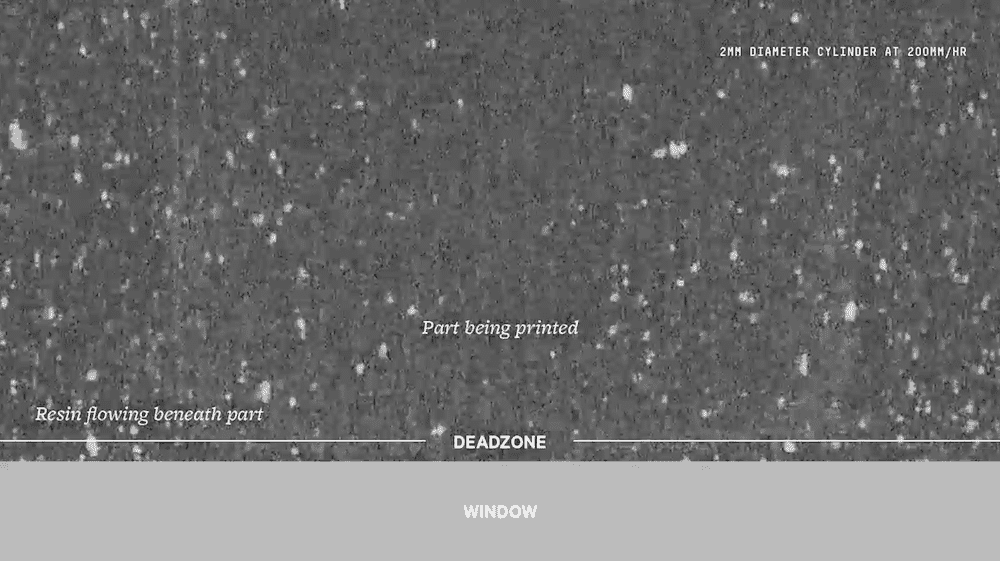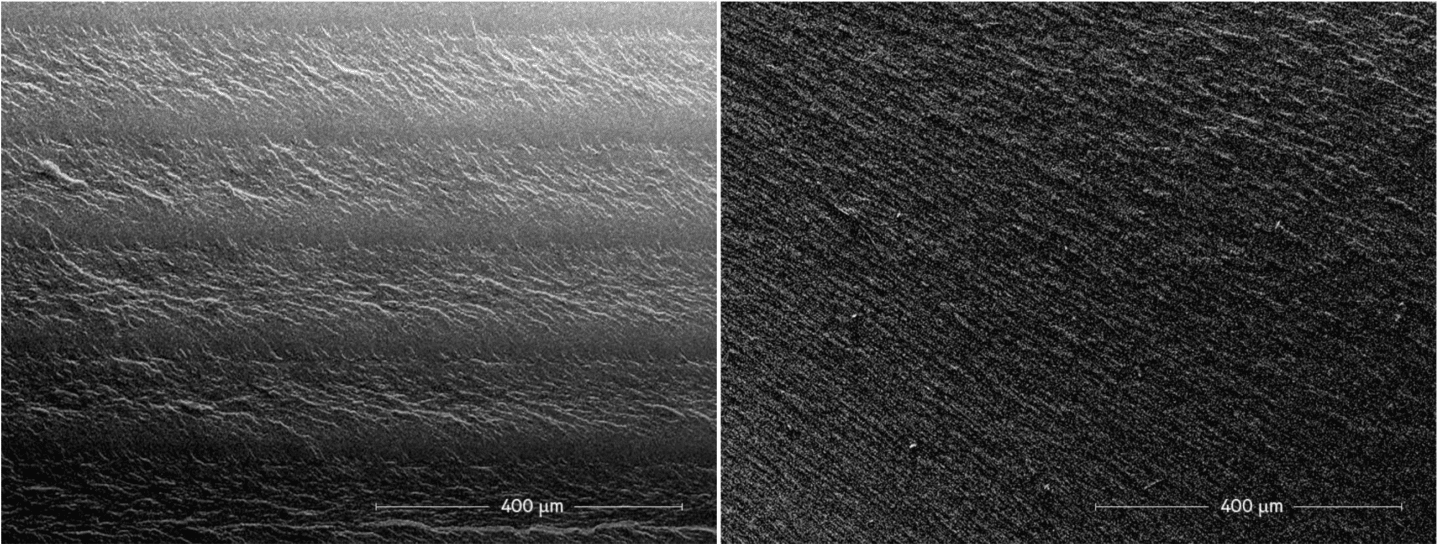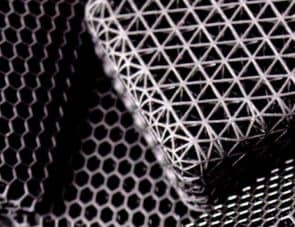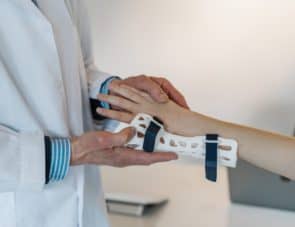The technology demands of the medical industry continuously fuel the development of medical engineering and modern manufacturing capabilities. More and more advanced technologies are employed to turn life-changing designs into consumer-ready products. One of these technologies is Carbon Digital Light Synthesis (DLS), a 3D printing technology that enables the production of parts made of engineering elastomers that vastly outperform competing materials in stereolithography (SLA) or digital light processing (DLP) sphere. This article will explain the benefits of switching to carbon 3D printing in the medical industry.
What is Carbon DLS?
Carbon DLS makes use of the CLIP process, which stands for Continuous Liquid Interface Production. CLIP consists of 2 steps as described below:
Step 1 – Printing
Carbon DLS printing is similar to SLA printing as they both involve the use of a reservoir of resin and a light projection system to produce solid parts. This, however, is where the similarities between them end. In Carbon DLS, a permeable screen is used that allows oxygen molecules through but keeps the liquid polymer in the vat. The oxygen forms a microscopic boundary layer between the screen and liquid interface known as the dead zone. This layer of oxygen prevents the resin from curing directly at the screen level enabling it to flow continuously into the dead zone and giving rise to the isotropic properties parts printed with Carbon DLS technology are known for.
Step 2 – Curing
When the forming process is complete and they are brought out of the machine, parts made from certain advanced materials are not fully cured. Such parts need to undergo further thermal curing in an oven before they can acquire their full mechanical properties. The heat accelerates cross-linking of the polymer chains, resulting in extremely resilient and tough parts.

Carbon DLS Materials
To fully appreciate the benefits provided by Carbon DLS 3D printing in the medical industry, we need to first clarify the difference between anisotropy and isotropy.
Anisotropy
The mechanical properties of anisotropic parts/materials vary when measured in different planes. 3D-printed parts are typically anisotropic in nature because of their layer by layer build. An example is an FDM printed part that is built by stacking layers in the z-axis. The interfaces between consecutive layers are weak points where cracks are likely to develop and failures ultimately occur if the part is loaded in the z-axis. On the x and y-axes, on the other hand, these weak points are absent, and loading on these axes doesn’t result in any problems.
Therefore the part is mechanically weaker in its z-axis, compared to its x and y-axes. Anisotropy is not a suitable property for parts designed for the medical industry as these parts are commonly employed in complex applications in which loading can take place in just any direction.

Isotropy
Isotropic parts/materials, unlike their anisotropic counterparts, have the same properties when measured in all directions. Their properties are the same irrespective of what direction the load is applied and the properties measured. This material/part behaviour is critical in products that receive complex multi-directional loading. Not many 3D printing processes are capable of creating isotropic parts. The unique technology behind Carbon DLS makes it one of the very few 3D printing processes that can produce isotropic parts.
What Materials are Available?
Carbon DLS is a unique process as it can print elastomeric materials with rubber-like strength and resilience. Some are listed below.
- Urethane Methacrylate (UMA 90) – This material is similar to standard SLA resin as it doesn’t require post-print thermal curing.
- Rigid Polyurethane (RPU 70) – Due to its toughness, strength, and heat resistance, this material is excellent for production parts.
- Flexible Polyurethane (FPU 50) – This material is a flexible variant of the polyurethane range of resins. It provides additional fatigue resistance and toughness.
- Cyanate Ester (DLS CE 221) – This is a rigid polymer with outstanding resistance to high temperatures. It also has high strength and stiffness.
- Epoxy (DLS EPX 82) – This rigid epoxy has superb mechanical properties and is great for printing structural components.
- Silicone (SIL 30) – One property that makes this soft silicone urethane very sought-after in the medical industry is its biocompatibility. It also has good tear resistance.
- Elastomeric Polyurethane (EPU 40) – This material serves well for impact absorption and vibration damping applications.
The materials above provide a wide range of tensile strength, toughness, fatigue resistance, abrasion resistance, and many other desirable properties. Whatever the application, one or more of them will be suitable. Every one of these properties is desirable for medical applications where parts usually go through high levels of cyclic loading or are required to provide high accuracy when employed for surgery preparations or as testing guides.
Applications of Carbon DLS 3D Printing in the Medical Industry
Application #1 – Guides/Tools
Carbon DLS can print parts that help surgeons accurately position drills and other surgical implements. The high speed and low cost of this printing method allow custom guides of patients to be printed based on MRIs or 3D scans are taken. This way, each part is custom-made to the exact physique of the patient, thus improving surgical accuracy and reducing risk.
Application #2 – Surgical Preparation
To prepare for complex surgeries, surgeons often analyze patient data such as MRI or CT scans. Modern carbon 3D printing has allowed surgeons to study a patient much better before surgery by printing full-scale representations of a patient’s organs based on those scans.
Application #3 – Prosthetics
The creation of both custom and generic prosthetics is one of the most ubiquitous applications of carbon 3D printing in the medical industry. Custom-made prosthetics were usually quite expensive to create using traditional manufacturing methods. On the other hand, FDM and other layer-based printing technologies are incapable of producing mechanically sound parts. However, with Carbon DLS printing technology, prosthetics can now be inexpensively produced from high-quality, engineering-grade materials that possess the right properties to increase their performance.
Application #4 – Hearing Aids
Hearing aids are another medical technology that benefits immensely from Carbon DLS’s flexibility. Hearing aids need to perfectly match the shape of a patient’s ear canal to work properly. Carbon DLS is capable of producing highly accurate prints that fit in the patient’s ear. Also, hearing aids and other hearing protection gadgets can be made from comfortable softer elastomers that can only be printed using carbon DLS technology.
Application #5 – Prototyping
Medical engineering depends on rigorous research and development cycles to develop a product. Multiple prototypes need to be created to thoroughly test the fit, form, and functionality of a design. Using Carbon DLS, you can use cheaper suitable materials to quickly manufacture functional prototypes. The same process can then be used to make end products.
Read more about the use of Carbon DSL 3D Printed parts in the medical industry.
Conclusion
As the medical industry continues to generate advanced innovations, equally advanced manufacturing equipment is required to bring these innovations to market quickly and cheaply without compromising on quality and functionality. To learn more about how to leverage carbon DLS 3D printing in the medical industry, make use of Xometry’s instant quote tool to get accurate cost estimates on your medical device.
推荐阅读:专业3D打印服务

